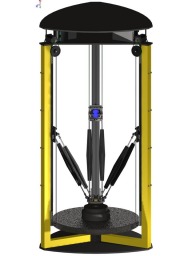Ultimo
Discussion in 'Other Builds' started by Brian Slee, Apr 27, 2014.
Ultimo
Discussion in 'Other Builds' started by Brian Slee, Apr 27, 2014.
Ultimo is the ultimate multi tool for the person who's serious about prototyping new ideas. A Delta Robot frame supports 3d printing up to 450mm in diameter, a powerful CNC Mill, and 50 amp plasma cutter for processing steel plate. And that's just a start.....wait till you see some of the other attachments we are currently working on incorporating.
Page 6 of 7
Page 6 of 7
